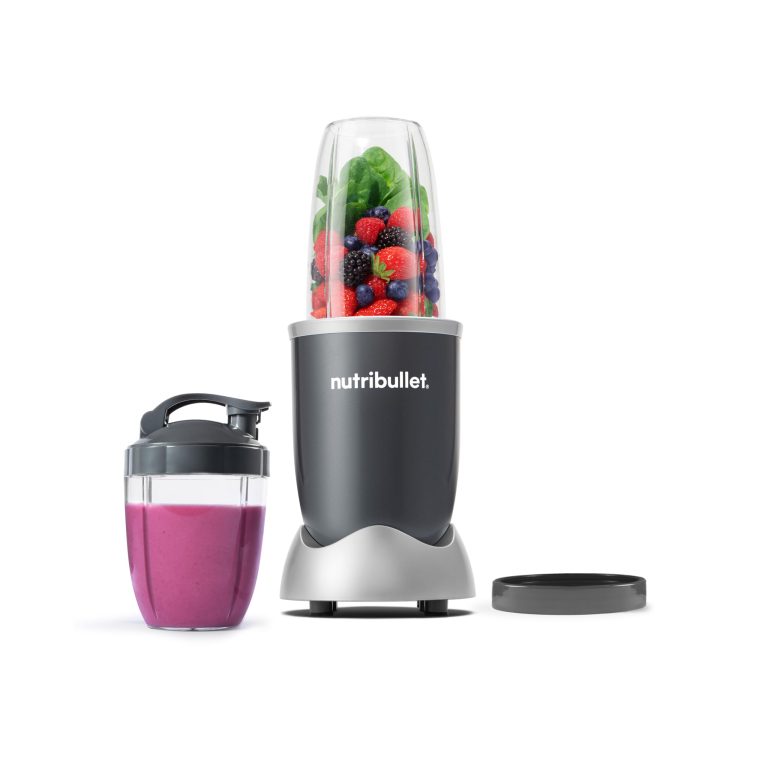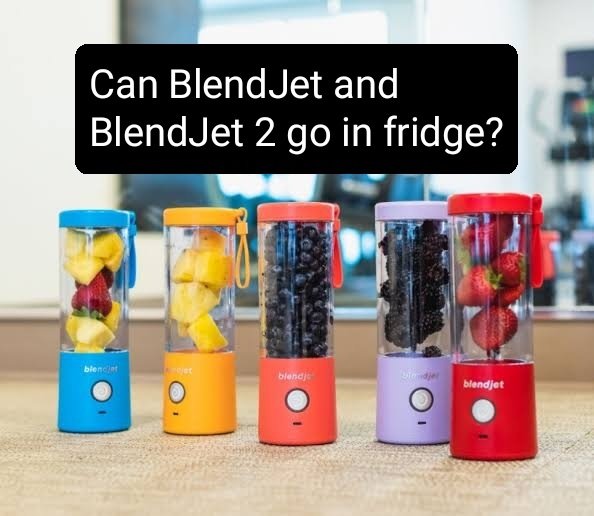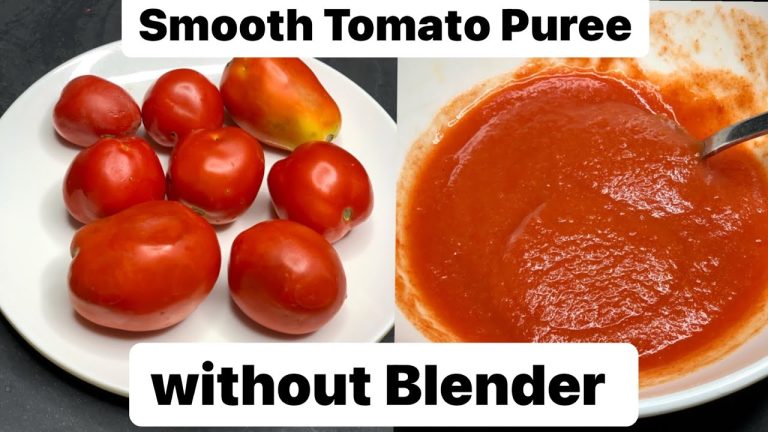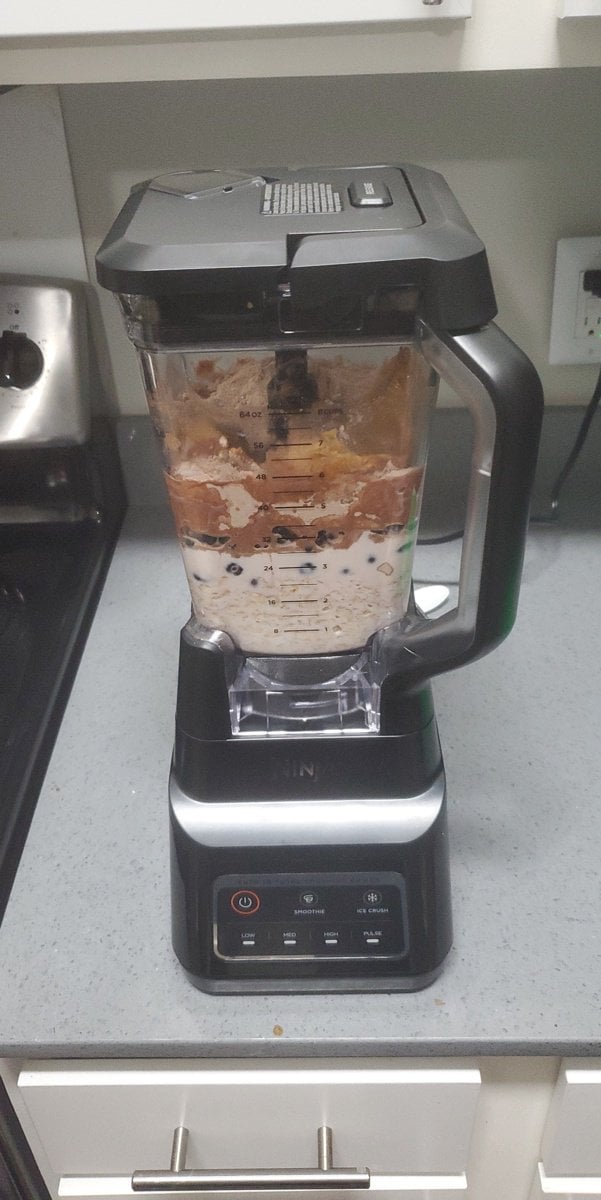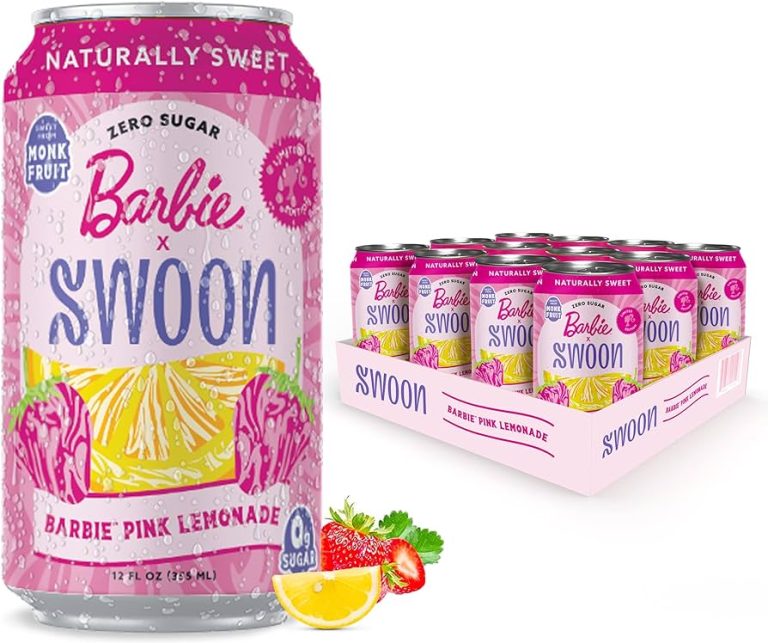As an Amazon Associate, I earn from qualifying purchases.
You can use a hand mixer or a food processor as a substitute for an immersion blender. Hand mixers are great for blending small batches of ingredients, while a food processor can handle larger quantities and more robust tasks.
Looking for a quick and convenient alternative to an immersion blender? These kitchen tools can easily step in to help you achieve the same results without the need for extra equipment. Whether you’re making soups, sauces, or smoothies, knowing how to make the most of your kitchen appliances can save you time and effort.
Understanding the versatile nature of kitchen tools empowers you to create delicious recipes efficiently. By exploring different options, you can find the best fit for your cooking style and needs.
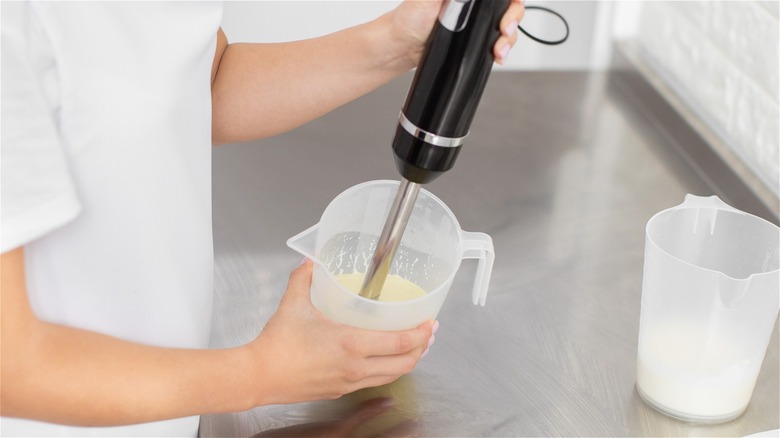
Credit: www.mashed.com
Using A Hand Mixer
Hand mixers are versatile kitchen tools that can serve as a great substitute for an immersion blender. One of the primary benefits of using a hand mixer is its ease of use and convenient portability.
Benefits Of Using A Hand Mixer
- Multipurpose tool for mixing various ingredients.
- The compact design makes storage and handling simple.
- Effective in achieving smooth and consistent textures.
- Allows for precise control over mixing speed.
Techniques For Mixing With A Hand Mixer
- Start with room temperature ingredients for optimal blending.
- Place the beaters into the mixture before turning on the hand mixer.
- Use a medium speed setting for most mixing tasks.
- Move the hand mixer around the bowl to ensure even mixing.
Using A Stand Mixer
When it comes to blending ingredients, an immersion blender is a handy tool to have in the kitchen. But what if you don’t have one? Don’t worry! There are other options available, such as using a stand mixer. A stand mixer is a versatile appliance that can be used for various tasks in the kitchen, including blending. In this blog post, we will explore how you can use a stand mixer as a substitute for an immersion blender and the advantages of doing so.
Advantages Of Using A Stand Mixer
If you don’t have an immersion blender but own a stand mixer, you’re in luck! Using a stand mixer comes with several advantages when it comes to blending ingredients. Here are some of the benefits:
- Versatility: A stand mixer is a versatile appliance that can be used for multiple tasks, including blending, mixing, and whipping.
- Powerful Motor: Stand mixers typically have powerful motors that can handle tough blending tasks and ensure smooth results.
- Large Capacity: Unlike handheld immersion blenders, stand mixers often come with large mixing bowls, allowing you to blend larger quantities of ingredients at once.
- Hands-Free Operation: When using a stand mixer as a blender, you can enjoy the convenience of a hands-free operation, allowing you to multitask in the kitchen.
Tips For Using A Stand Mixer As A Blender
Now that you know the advantages of using a stand mixer as a substitute for an immersion blender, here are some useful tips to help you achieve the best results:
- Select the Right Attachment: Make sure to use the appropriate attachment for blending. Most stand mixers offer a paddle or whisk attachment that can work effectively for blending tasks.
- Cut Ingredients into Smaller Pieces: To ensure smoother blending, cut your ingredients into smaller pieces before adding them to the mixing bowl. This will help the stand mixer blend them more effectively.
- Start Slow, Then Increase Speed: Begin the blending process at a low speed to avoid any splattering or mess. Gradually increase the speed as the ingredients start to combine.
- Monitor the consistency: Unlike immersion blenders, stand mixers may not provide as much control over the blending process. Keep an eye on the consistency of your mixture and adjust the blending time accordingly.
Using a stand mixer as a substitute for an immersion blender can be a practical solution when you don’t have the latter on hand. With its versatility and power, a stand mixer can help you achieve smooth and well-blended results. Follow these tips, and you’ll be able to blend your ingredients seamlessly using a stand mixer.
Using A Food Processor
Benefits Of Using A Food Processor For Blending
A food processor is a versatile kitchen tool that can be used as an alternative to an immersion blender for blending ingredients. Here are the benefits of using a food processor for blending:
- Ability to handle larger quantities of ingredients at once
- Versatility for various kitchen tasks beyond blending
- Efficient at pureeing, chopping, and mixing ingredients
- Provides a smoother texture for blended foods
How To Blend With A Food Processor
Blending with a food processor is straightforward and can yield excellent results when done correctly. Here’s a simple guide on how to use a food processor for blending:
- Prepare the ingredients: Chop the ingredients into smaller pieces to facilitate smooth blending.
- Assemble the food processor: Ensure that the blade attachment is secured properly in the food processor bowl.
- Add the ingredients: Place the chopped ingredients into the food processor bowl.
- Select the blending speed: Start with a lower speed and gradually increase as needed for the desired consistency.
- Monitor the blending: Pause and scrape down the sides of the bowl as necessary to ensure even blending.
- Check the texture: Stop blending and check the texture of the ingredients to avoid over-processing.

Credit: m.youtube.com
Using A Blender
When you don’t have an immersion blender on hand, a regular blender can be an effective substitute for various blending tasks. The powerful motor and sharp blades of a blender make it an excellent alternative for pureeing soups, making smoothies, and creating creamy sauces. In this section, we’ll explore why a blender can be an effective substitute and delve into some blending techniques with a blender.
Why A Blender Can Be An Effective Substitute
Blenders are adept at thoroughly mixing and pureeing ingredients, making them an excellent stand-in for an immersion blender. While immersion blenders are handheld and suitable for blending directly in a pot or bowl, blenders can achieve similar results with their high-speed blending capabilities. The versatility of blenders allows them to handle a wide range of blending tasks, making them a valuable substitute for immersion blenders.
Blending Techniques With A Blender
When using a blender as a substitute for an immersion blender, it’s essential to follow specific blending techniques to ensure optimal results. Always start by adding the ingredients to the blender jar, ensuring that the liquid contents are added first to aid in the blending process. Secure the lid tightly to prevent any splattering, and pulse the blender in short bursts to initiate the blending process.
Manual Alternatives
When it comes to cooking, having the right tools can make all the difference. But what do you do when you don’t have a fancy immersion blender on hand? Don’t worry, there are still plenty of manual alternatives that can help you achieve the same results. In this post, we will explore two popular methods: the whisk and bowl method and the mortar and pestle technique.
Whisk And Bowl Method
The whisk and bowl method is a simple and effective way to blend ingredients without an immersion blender. All you need is a whisk and a sturdy bowl. Here’s how it works:
- Start by placing your ingredients in the bowl. Whether you’re making a soup, a sauce, or a smoothie, make sure everything is in the bowl.
- Take the whisk and vigorously mix the ingredients together. Use an up and down motion to incorporate air into the mixture.
- Continue whisking until the ingredients are well combined and you have reached your desired consistency.
The whisk and bowl method is great for recipes that require a slightly chunky texture or for whipping cream to soft peaks. It may require more effort and time compared to an immersion blender, but it gets the job done.
Mortar And Pestle Technique
If you’re looking for a more rustic and hands-on approach, the mortar and pestle technique is worth considering. It works particularly well for grinding, crushing, and blending dry ingredients or small amounts of wet ingredients. Here’s how you can use a mortar and pestle:
- Place your ingredients in the mortar. Make sure to work in small batches for better control.
- Using the pestle, start grinding and crushing the ingredients in a circular motion. Apply pressure and continue grinding until the desired consistency is achieved.
- If needed, you can adjust the texture by adding more ingredients or grinding for longer.
The mortar and pestle technique is perfect for making homemade pesto, grinding spices, or crushing garlic. It allows you to have more control over the texture and results in flavors that are more intense.
Tips For Success
Ensuring Proper Consistency:
- Maintain even pressure while using the substitute blender.
- Regularly check the mixture for desired smoothness.
Adjusting Speeds and Techniques:
- Start at a low speed and gradually increase for smoother results.
- Experiment with different motions to achieve optimal blending.
Recipes For Blender-free Blending
Whip up delicious smoothies without an immersion blender with these blender-free recipes:
- Berry Blast: Blend strawberries, blueberries, yogurt, and honey.
- Tropical Paradise: Mix pineapple, mango, banana, and coconut milk.
- Green Goodness: Combine spinach, apple, cucumber, and lemon juice.
Create savory soups sans blender using these simple recipes:
- Creamy Tomato Basil: Simmer tomatoes, cream, basil, and garlic.
- Chunky Vegetable: Cook mixed veggies, broth, and spices.
- Lentil Delight: Boil lentils, carrots, onions, and cumin.
Frequently Asked Questions For Substitute For An Immersion Blender
What Can I Use Instead Of An Immersion Blender?
You can use a regular blender, food processor, or hand mixer as a substitute for an immersion blender. Each tool can effectively blend, puree, or mix ingredients to achieve similar results in your recipes.
Are Immersion Blenders And Hand Blenders The Same?
Yes, immersion blenders and hand blenders refer to the same kitchen tool. They are handheld blending devices that can be immersed directly into liquids or ingredients to blend or puree them directly in the container. Both terms can be used interchangeably.
Can I Use A Whisk Instead Of An Immersion Blender?
While a whisk can be used as a substitute for an immersion blender in certain recipes, it may not achieve the same smooth consistency. A whisk is ideal for light mixing, whipping, and incorporating air into ingredients, but may not be as effective in pureeing or blending tasks.
Is a food processor a good alternative to an immersion blender?
Yes, a food processor can serve as a good alternative to an immersion blender. It is effective in pureeing, blending, and mixing ingredients. However, it is bulkier and may require more cleanup compared to an immersion blender, so consider the recipe and convenience before choosing a substitute.
Conclusion
If you don’t have an immersion blender on hand, there are several alternatives that can still get the job done. From using a traditional blender or food processor to employing a whisk or fork, the possibilities are endless. Experimenting with different substitution options can not only save you money, but also open up a world of creativity in the kitchen.
Don’t let the lack of an immersion blender limit your culinary adventures!
As an Amazon Associate, I earn from qualifying purchases.

